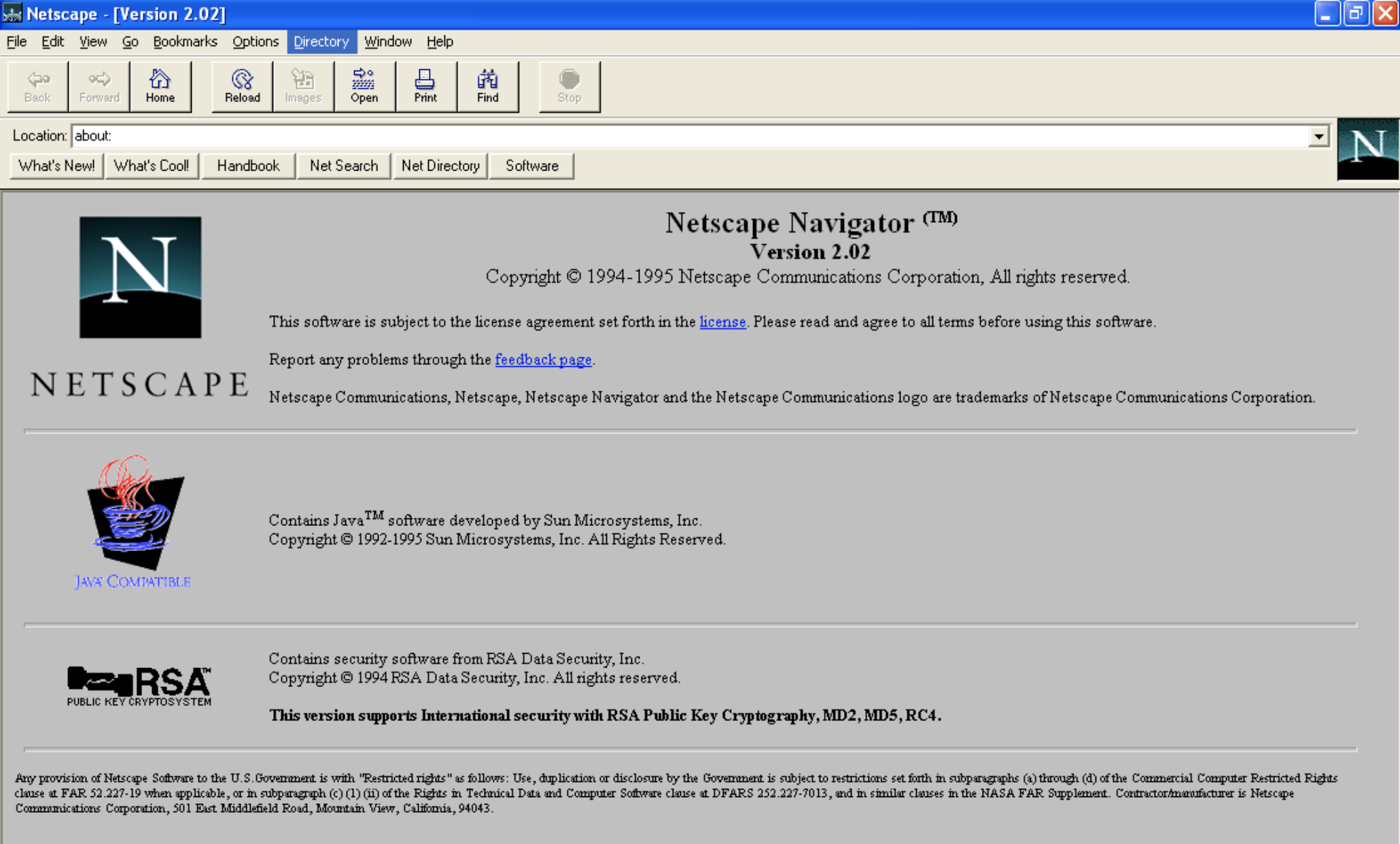The History of JavaScript
JavaScript is everywhere, and for the seventh year in a row, it has been ranked the most commonly used programming language, with 67.8% of developers employing it in 2019. Its ascent to the world’s most popular programming language is synonymous with the rise of the internet itself.
Created out of necessity, it is used to build 95.2% (1.52 billion) of websites today, including some of the world’s largest, like Facebook and YouTube. Without it, we would not have popular and useful web apps such as Google Maps and eBay.
So, without further ado, let’s take a look at what JavaScript is, how and why it was created, and what’s next for the language.
What Is JavaScript?
JavaScript is a scripting language that is one of the three core languages used to develop websites. Whereas HTML and CSS give a website structure and style, JavaScript lets you add functionality and behaviors to your website, allowing your website’s visitors to interact with content in many imaginative ways.
JavaScript is primarily a client-side language, meaning it runs on your computer within your browser. However, more recently the introduction of Node.js has allowed JavaScript to also execute code on servers.
Since its release, JavaScript has surpassed Java, Flash, and other languages because it is relatively easy to learn, has a free and open community, and, most importantly, is incredibly useful, allowing developers to quickly create apps with audiences in the millions.
JavaScript Origins

The early to mid-1990s was an important time for the internet. Key players like Netscape and Microsoft were in the midst of browser wars, with Netscape’s Navigator and Microsoft’s Internet Explorer going head to head.
In September 1995, a Netscape programmer named Brandan Eich developed a new scripting language in just 10 days. It was originally named Mocha, but quickly became known as LiveScript and, later, JavaScript.
JavaScript vs. Java
There’s often some confusion about the two, but JavaScript and Java (another popular programming language for data scientists after Python) have almost nothing in common. The name JavaScript came from Netscape’s support of Java applets within its browser. Many say it was also a marketing tactic to divert some attention from Java, which was the most buzzed-about language at the time. To run Java programs, the code must be first compiled into an executable form. On the other hand, JavaScript was created to be interpreted at run time, making it much more dynamic (these days the boundary of the two methods is a lot more blurred).
JavaScript didn’t exactly get off to the best start. It didn’t perform as well, and those developing in Java considered JavaScript more of a “UI glue” to be used mostly by designers and other non-engineers. But the reality is that having a “glue” language allowed the internet to really flourish. Programmers could react better to use events and compose interactive components. And due to that, JavaScript spread like wildfire and very quickly became the lingua franca of the web.
Get To Know Other Data Science Students
Mikiko Bazeley
ML Engineer at MailChimp
George Mendoza
Lead Solutions Manager at Hypergiant
Isabel Van Zijl
Lead Data Analyst at Kinship
ECMAScript Is Born
In 1997, due to JavaScript’s rapid growth, it became clear that the language would need to be properly maintained and managed. Therefore, Netscape handed the job of creating a language specification to the European Computer Manufacturers Association (ECMA), a body founded with the goal of standardizing computing. The ECMA specifications were labeled ECMA-262 and ECMAScript languages included JavaScript, JScript, and ActionScript.
Between 1997 and 1999, ECMA-262 had three revisions, but nearly 10 years later, version 4 was abandoned due to differing opinions on the direction of the language and its proposed features. Interestingly, many of these controversial features, such as generators, iterators, and destructuring assignments, have been included in more recent ECMAScript specifications.
The Paper That Started a Movement

The year 2005 proved to be a big one for JavaScript. A paper released by Jesse James Garrett introduced Ajax, a revolutionary suite of technologies that included JavaScript. Ajax vastly improved user experience by allowing web pages to feel more like native desktop apps. This really pushed JavaScript into the spotlight as a professional programming language.
This paper is considered to be one of the founding backbones of the JavaScript community. At the time, JavaScript had many challenges, including its verbose nature when doing simple things and the incompatibility issues between browsers. The community responded with large and popular JavaScript frameworks and libraries, such as Dojo and Mootools and jQuery.
Finding Common Ground
Following a 2008 event in Oslo, the ECMAScript 4 proposals were scaled back by many organizations and parties involved with JavaScript, including Yahoo, Google, and Microsoft. The project was codenamed Harmony and it came to fruition in 2015, when ECMAScript 6 was released.
In 2009, the CommonJS project set out to define and promote JavaScript development outside the browser by using modules to package useful code and functionality. This paved the way for Node.js as an environment to run browserless JavaScript. Now the language that ran the frontend of the internet was able to tackle the servers behind the scenes.
JavaScript Today

From its slightly rocky start, JavaScript has risen to be the most popular programming language in the world. According to GitHub’s 2018 Octoverse report, there are more JavaScript code repositories than any other language—and that number is steadily on the rise.
A series of JavaScript frameworks and libraries, such as Ember, Angular, React, and Vue, have been developed to allow powerful and complicated web applications to be written using small teams within short time spans. Alongside client and server software, it is now even possible to write native mobile apps using JavaScript. Unsurprisingly, this is becoming increasingly popular due to the ability to share code between the worlds of mobile and web.
With all this choice, it’s somewhat understandable that there has also been a movement toward a more grassroots, “vanilla” implementation of JavaScript. Web components, small reusable custom browser elements, are the latest challenger aiming to be the next breakthrough in the JavaScript world. Recently, many libraries related to data science are being introduced to support the various domains of artificial intelligence. Tensorflow, for example, is a popular Javascript library for data scientists that allows them to create dataflow graphs. Whatever the next big thing is, it’s clear that JavaScript is going to be with us for many years to come.
Companies are no longer just collecting data. They’re seeking to use it to outpace competitors, especially with the rise of AI and advanced analytics techniques. Between organizations and these techniques are the data scientists – the experts who crunch numbers and translate them into actionable strategies. The future, it seems, belongs to those who can decipher the story hidden within the data, making the role of data scientists more important than ever.
In this article, we’ll look at 13 careers in data science, analyzing the roles and responsibilities and how to land that specific job in the best way. Whether you’re more drawn out to the creative side or interested in the strategy planning part of data architecture, there’s a niche for you.
Is Data Science A Good Career?
Yes. Besides being a field that comes with competitive salaries, the demand for data scientists continues to increase as they have an enormous impact on their organizations. It’s an interdisciplinary field that keeps the work varied and interesting.
10 Data Science Careers To Consider
Whether you want to change careers or land your first job in the field, here are 13 of the most lucrative data science careers to consider.
Data Scientist
Data scientists represent the foundation of the data science department. At the core of their role is the ability to analyze and interpret complex digital data, such as usage statistics, sales figures, logistics, or market research – all depending on the field they operate in.
They combine their computer science, statistics, and mathematics expertise to process and model data, then interpret the outcomes to create actionable plans for companies.
General Requirements
A data scientist’s career starts with a solid mathematical foundation, whether it’s interpreting the results of an A/B test or optimizing a marketing campaign. Data scientists should have programming expertise (primarily in Python and R) and strong data manipulation skills.
Although a university degree is not always required beyond their on-the-job experience, data scientists need a bunch of data science courses and certifications that demonstrate their expertise and willingness to learn.
Average Salary
The average salary of a data scientist in the US is $156,363 per year.
Data Analyst
A data analyst explores the nitty-gritty of data to uncover patterns, trends, and insights that are not always immediately apparent. They collect, process, and perform statistical analysis on large datasets and translate numbers and data to inform business decisions.
A typical day in their life can involve using tools like Excel or SQL and more advanced reporting tools like Power BI or Tableau to create dashboards and reports or visualize data for stakeholders. With that in mind, they have a unique skill set that allows them to act as a bridge between an organization’s technical and business sides.
General Requirements
To become a data analyst, you should have basic programming skills and proficiency in several data analysis tools. A lot of data analysts turn to specialized courses or data science bootcamps to acquire these skills.
For example, Coursera offers courses like Google’s Data Analytics Professional Certificate or IBM’s Data Analyst Professional Certificate, which are well-regarded in the industry. A bachelor’s degree in fields like computer science, statistics, or economics is standard, but many data analysts also come from diverse backgrounds like business, finance, or even social sciences.
Average Salary
The average base salary of a data analyst is $76,892 per year.
Business Analyst
Business analysts often have an essential role in an organization, driving change and improvement. That’s because their main role is to understand business challenges and needs and translate them into solutions through data analysis, process improvement, or resource allocation.
A typical day as a business analyst involves conducting market analysis, assessing business processes, or developing strategies to address areas of improvement. They use a variety of tools and methodologies, like SWOT analysis, to evaluate business models and their integration with technology.
General Requirements
Business analysts often have related degrees, such as BAs in Business Administration, Computer Science, or IT. Some roles might require or favor a master’s degree, especially in more complex industries or corporate environments.
Employers also value a business analyst’s knowledge of project management principles like Agile or Scrum and the ability to think critically and make well-informed decisions.
Average Salary
A business analyst can earn an average of $84,435 per year.
Database Administrator
The role of a database administrator is multifaceted. Their responsibilities include managing an organization’s database servers and application tools.
A DBA manages, backs up, and secures the data, making sure the database is available to all the necessary users and is performing correctly. They are also responsible for setting up user accounts and regulating access to the database. DBAs need to stay updated with the latest trends in database management and seek ways to improve database performance and capacity. As such, they collaborate closely with IT and database programmers.
General Requirements
Becoming a database administrator typically requires a solid educational foundation, such as a BA degree in data science-related fields. Nonetheless, it’s not all about the degree because real-world skills matter a lot. Aspiring database administrators should learn database languages, with SQL being the key player. They should also get their hands dirty with popular database systems like Oracle and Microsoft SQL Server.
Average Salary
Database administrators earn an average salary of $77,391 annually.
Data Engineer
Successful data engineers construct and maintain the infrastructure that allows the data to flow seamlessly. Besides understanding data ecosystems on the day-to-day, they build and oversee the pipelines that gather data from various sources so as to make data more accessible for those who need to analyze it (e.g., data analysts).
General Requirements
Data engineering is a role that demands not just technical expertise in tools like SQL, Python, and Hadoop but also a creative problem-solving approach to tackle the complex challenges of managing massive amounts of data efficiently.
Usually, employers look for credentials like university degrees or advanced data science courses and bootcamps.
Average Salary
Data engineers earn a whooping average salary of $125,180 per year.
Database Architect
A database architect’s main responsibility involves designing the entire blueprint of a data management system, much like an architect who sketches the plan for a building. They lay down the groundwork for an efficient and scalable data infrastructure.
Their day-to-day work is a fascinating mix of big-picture thinking and intricate detail management. They decide how to store, consume, integrate, and manage data by different business systems.
General Requirements
If you’re aiming to excel as a database architect but don’t necessarily want to pursue a degree, you could start honing your technical skills. Become proficient in database systems like MySQL or Oracle, and learn data modeling tools like ERwin. Don’t forget programming languages – SQL, Python, or Java.
If you want to take it one step further, pursue a credential like the Certified Data Management Professional (CDMP) or the Data Science Bootcamp by Springboard.
Average Salary
Data architecture is a very lucrative career. A database architect can earn an average of $165,383 per year.
Machine Learning Engineer
A machine learning engineer experiments with various machine learning models and algorithms, fine-tuning them for specific tasks like image recognition, natural language processing, or predictive analytics. Machine learning engineers also collaborate closely with data scientists and analysts to understand the requirements and limitations of data and translate these insights into solutions.
General Requirements
As a rule of thumb, machine learning engineers must be proficient in programming languages like Python or Java, and be familiar with machine learning frameworks like TensorFlow or PyTorch. To successfully pursue this career, you can either choose to undergo a degree or enroll in courses and follow a self-study approach.
Average Salary
Depending heavily on the company’s size, machine learning engineers can earn between $125K and $187K per year, one of the highest-paying AI careers.
Quantitative Analyst
Qualitative analysts are essential for financial institutions, where they apply mathematical and statistical methods to analyze financial markets and assess risks. They are the brains behind complex models that predict market trends, evaluate investment strategies, and assist in making informed financial decisions.
They often deal with derivatives pricing, algorithmic trading, and risk management strategies, requiring a deep understanding of both finance and mathematics.
General Requirements
This data science role demands strong analytical skills, proficiency in mathematics and statistics, and a good grasp of financial theory. It always helps if you come from a finance-related background.
Average Salary
A quantitative analyst earns an average of $173,307 per year.
Data Mining Specialist
A data mining specialist uses their statistics and machine learning expertise to reveal patterns and insights that can solve problems. They swift through huge amounts of data, applying algorithms and data mining techniques to identify correlations and anomalies. In addition to these, data mining specialists are also essential for organizations to predict future trends and behaviors.
General Requirements
If you want to land a career in data mining, you should possess a degree or have a solid background in computer science, statistics, or a related field.
Average Salary
Data mining specialists earn $109,023 per year.
Data Visualisation Engineer
Data visualisation engineers specialize in transforming data into visually appealing graphical representations, much like a data storyteller. A big part of their day involves working with data analysts and business teams to understand the data’s context.
General Requirements
Data visualization engineers need a strong foundation in data analysis and be proficient in programming languages often used in data visualization, such as JavaScript, Python, or R. A valuable addition to their already-existing experience is a bit of expertise in design principles to allow them to create visualizations.
Average Salary
The average annual pay of a data visualization engineer is $103,031.
Resources To Find Data Science Jobs
The key to finding a good data science job is knowing where to look without procrastinating. To make sure you leverage the right platforms, read on.
Job Boards
When hunting for data science jobs, both niche job boards and general ones can be treasure troves of opportunity.
Niche boards are created specifically for data science and related fields, offering listings that cut through the noise of broader job markets. Meanwhile, general job boards can have hidden gems and opportunities.
Online Communities
Spend time on platforms like Slack, Discord, GitHub, or IndieHackers, as they are a space to share knowledge, collaborate on projects, and find job openings posted by community members.
Network And LinkedIn
Don’t forget about socials like LinkedIn or Twitter. The LinkedIn Jobs section, in particular, is a useful resource, offering a wide range of opportunities and the ability to directly reach out to hiring managers or apply for positions. Just make sure not to apply through the “Easy Apply” options, as you’ll be competing with thousands of applicants who bring nothing unique to the table.
FAQs about Data Science Careers
We answer your most frequently asked questions.
Do I Need A Degree For Data Science?
A degree is not a set-in-stone requirement to become a data scientist. It’s true many data scientists hold a BA’s or MA’s degree, but these just provide foundational knowledge. It’s up to you to pursue further education through courses or bootcamps or work on projects that enhance your expertise. What matters most is your ability to demonstrate proficiency in data science concepts and tools.
Does Data Science Need Coding?
Yes. Coding is essential for data manipulation and analysis, especially knowledge of programming languages like Python and R.
Is Data Science A Lot Of Math?
It depends on the career you want to pursue. Data science involves quite a lot of math, particularly in areas like statistics, probability, and linear algebra.
What Skills Do You Need To Land an Entry-Level Data Science Position?
To land an entry-level job in data science, you should be proficient in several areas. As mentioned above, knowledge of programming languages is essential, and you should also have a good understanding of statistical analysis and machine learning. Soft skills are equally valuable, so make sure you’re acing problem-solving, critical thinking, and effective communication.
Since you’re here…Are you interested in this career track? Investigate with our free guide to what a data professional actually does. When you’re ready to build a CV that will make hiring managers melt, join our Data Science Bootcamp which will help you land a job or your tuition back!






